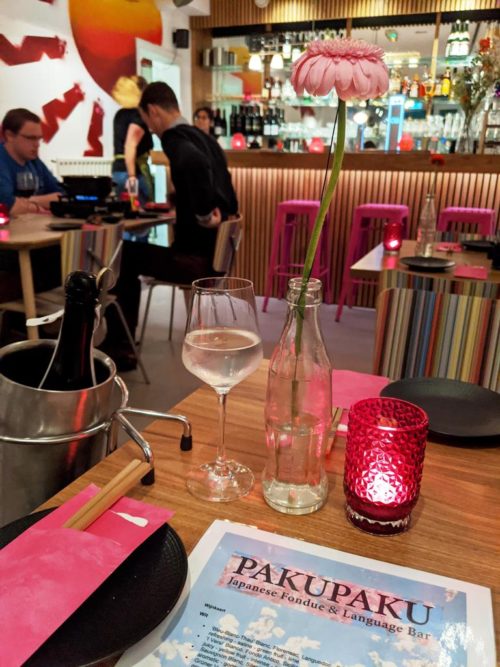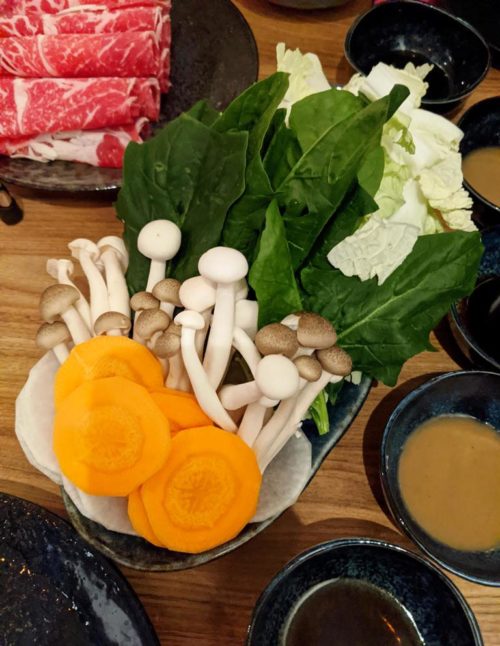Taking over the former location of Georgian restaurant Batoni Khinkali, PakuPaku is a Japanese “fondue” restaurant whose name literally translates as “Eat Eat”. I put fondue in inverted comments, as I suspect this is a handy comparison used by the staff to explain shabu-shabu to Westerners who’ve never come across it. And while it does indeed involve dipping things into hot liquid, that’s about where the similarity ends. But more on that later…

From there, we moved swiftly onto the shabu-shabu itself, which perhaps would better be described as a Japanese hotpot with a base of soy sauce and kombu. Unlike other similar dishes, there’s not a huge quantity of the broth – and it later becomes apparent why: having dipped and/or cooked all your meat, fish and veggies in it, you’re encouraged to eat the flavourful broth spooned over rice. For our shabu-shabu, we chose the “Ribeye Royale” (a higher grade variety of beef, although we stopped short of the eye-wateringly expensive wagyu) and the tuna. While the beef was served wafer-thinly sliced and the tuna in meatier chunks, both cooked in the broth within seconds. Whatever you order, it comes with a heaped plate of fresh vegetables, including carrot, daikon, Chinese cabbage, spinach and mushrooms, most of which take a little longer to cook. Having shabu-ed your morsel of choice, you then introduce it to two dipping sauces: one soy-based, the other sesame-based. And the resulting mouthful is pretty darn delightful. Once we were all shabu-ed out, the rice arrived; I threw in the remainder of my dipping sauces for good measure along with the broth – a delicious and waste-free way to end the meal.

